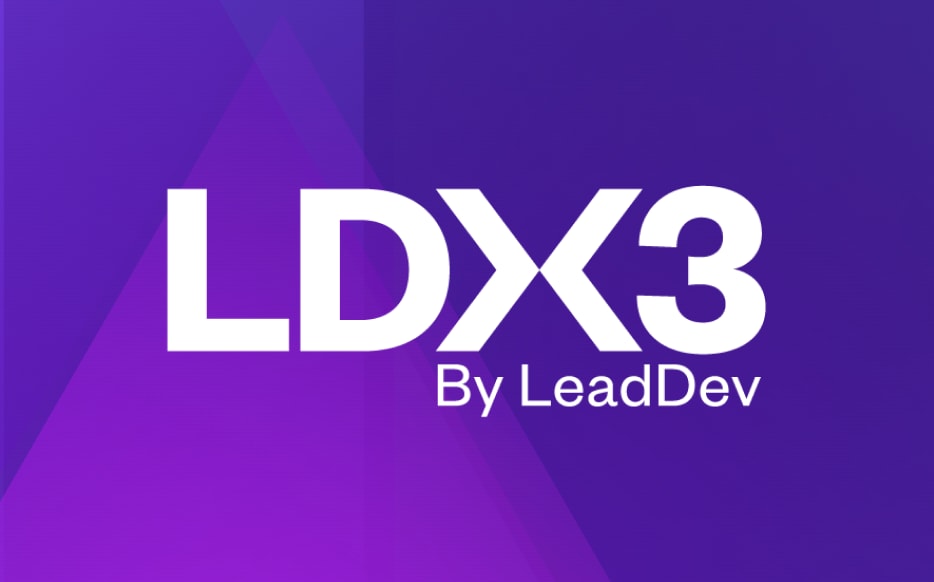
Latest
-

OpenAI report: Enterprise AI is still in the “early innings”
Insights into AI usage from 1 million business customers.
-
Why Zig is moving on from GitHub
A scathing review has broader implications for AI use by major platforms.
-
 In partnership with Redgate
In partnership with RedgateThe database risks you can’t afford to ignore
From compliance breaches to fragile legacy databases, ignore these blinking red lights at your peril
Editor’s picks

London • June 2 & 3, 2026
Rands, Nicole Forsgren,
& Matej Pfajfar confirmed
Essential reading

How to build an effective technical strategy
Building a tech strategy requires a lot of moving parts. Learn about what routes to take and whether decisions should be top-down.
On our Technical Direction playlist

Modernizing legacy systems: A technical strategy for evolving monoliths into modern architectures at HelloFresh
Gain insights into transforming legacy systems into scalable architectures, with practical strategies for balancing stability, managing technical debt, and enabling growth opportunities at HelloFresh.

Technical Vision vs. Technical Strategy: The difference and why it matters
Jonathan Maltz digs into the nuts and bolts of setting a successful technical strategy. Startin by talking about the difference between technical vision and technical strategy.

How to implement platform engineering at scale
In this webinar, we’ll hear from enterprise engineering leaders who’ve overcome cultural barriers and team silos, and successfully adopted platform engineering practices in their orgs.

Good technical debt
Jon Thornton discusses how this framework was used to rapidly build and ship Squarespace’s Email Campaigns product in less than 15 months. Along the way, you’ll get several practical guidelines for how tech debt can supercharge your technical investments.

Creating, defining, and refining an effective tech strategy
Having a defined tech strategy creates alignment and keeps everyone on the same page. So how can you ensure yours is most effective? Panelists Anna Shipman, Randy Shoup, Papanii Nene Okai, Nimisha Asthagiri and Anand Mariappan share their tips.
More about Technical Direction
-
How low (level) can you go
André Henry explores how an understanding of the low-level components of your systems can help you be that go-to engineer who solves those weird problems.
-
Executing and evaluating a technical strategy at scale
Driving a technical strategy across multiple teams
-
How software engineering teams purchase solutions
From startups to enterprises, how do different tech companies purchase solutions?
-
Learnings from ‘Carving a modern engineering org out of an enterprise’
Carving a modern engineering org out of an enterprise
-
When planning long-term, favor accuracy over precision
Grounding your plans in the value of the work
Top Technical Direction videos
-

Architecting for scale: Revisiting fundamentals for sustainable growth
In this talk, Viktor challenges this approach by advocating for adaptability and a return to basics in system design.
-

Managing engineering teams in the era of AI
Drawing from my experience as Engineering Manager at incident.io, where I was part of a product team that built the company’s first AI-powered features, this talk combines personal insights and broader leadership strategies.
-

Managing the marathon: Leading teams through lengthy migration projects
In this short talk, Lawrence will reflect on his experience leading teams through multi-year migration projects.
-

Iterate to Greatness: Building High Performance, AI-native Engineering Teams
In this talk, we’ll discuss how Vercel transitioned to an AI-native company and how you too can operate highly effective, AI-native product engineering teams, from the tools used to the way to stay organised amid the rapidly changing pace of AI.
-

Making smart investments: A framework for maximizing your ROI in technical decisions
In this talk, we’re going to explore a framework for evaluating the return on investment (ROI) of complex tech decisions, illustrated with real-world examples that highlight both the traps to avoid and the paths to success. I’ll share methods for pinpointing key metrics that matter, and how to design experiments or proof-of-concepts to measure ROI. Finally we will discuss the importance of staying objective and adaptable throughout the process.
-

Data Science Demystified
This talk gives an overview of Data Science and delves deep into the pipeline data scientists use – right from fetching the data, the Python tools and frameworks used to creating models, gaining insights and telling a story.
-

How to use technology radars to make transparent tech decisions
The talk centres around the benefits of building such a tool, such as transparency, alignment and faster onboarding.
-

Tech debt as innovation, reframing this forever problem as an opportunity
Tech Debt is a natural by-product of software engineering, yet we, in the software industry, don’t attack it with the same excitement or fervor as we do with product innovation or feature development.

